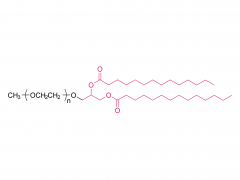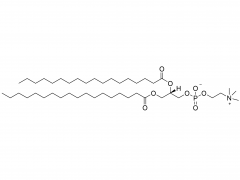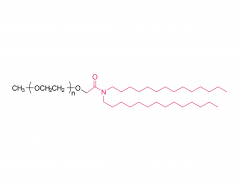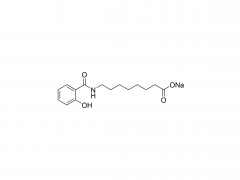
Product Abbreviation: H2N-PEG-NH2
Name: α,ω-Diamino poly(ethylene glycol)
CAS #: 24991-53-5
Molecular Weight: 2K, 5K, 10K, 20K, 40K
Packaging Sizes: 1g, 5g, 10g, 100g, 1kg, 10kg
Storage: -20±5℃
In the fields of biotechnology and pharmaceuticals, H2N-PEG-NH2 (commonly referred to as NH2-PEG-NH2) is emerging as an innovative and powerful derivative of polyethylene glycol (PEG), demonstrating unique charm and extensive application potential. This PEG derivative, with amino groups (NH2) at both ends, not only inherits excellent properties of PEG such as good water solubility, biocompatibility, and stability, but also brings revolutionary changes to areas such as biomolecule modification, drug delivery, and bioconjugation due to its unique bifunctional structure.
Outstanding Physicochemical Properties
NH2-PEG-NH2 exists in the form of white solid powder or viscous liquid, depending on the molecular weight of PEG. It is easily soluble in most organic solvents, facilitating its widespread application in organic synthesis and pharmaceutical preparation. While traditional PEG is highly water-soluble, the water solubility of NH2-PEG-NH2 may vary depending on specific application conditions, further broadening its range of applications. Moreover, it is typically stored at 2-8°C or -20°C to ensure product stability and activity.
Wide Range of Applications
Drug molecule modification: NH2-PEG-NH2 serves as a modifier for drug molecules, coupling via its amino terminals with reactive groups such as carboxyl and aldehyde groups in drug molecules, thereby altering their water solubility, stability, and biological activity. Such modified drug molecules exhibit enhanced targeting and sustained release in drug delivery systems, improving therapeutic efficacy and reducing side effects.
Bioconjugation: NH2-PEG-NH2 is also used for the conjugation of biomolecules such as proteins, antibodies, and nucleic acids, constructing bioconjugates with specific structures and functions. These bioconjugates hold broad application prospects in biosensors, bioimaging, and disease diagnosis.
Material surface modification: Leveraging its excellent hydrophilicity and biocompatibility, NH2-PEG-NH2 is employed to modify material surfaces, enhancing their hydrophilicity and stability, thereby improving material biocompatibility and functionality. This surface modification technique holds enormous potential in biomedical engineering, tissue engineering, and regenerative medicine.
Peptide and protein synthesis: In peptide synthesis as a carrier and in preparing ligands with bioactive compounds, NH2-PEG-NH2 plays a crucial role in peptide and protein engineering. It not only enhances the stability and water solubility of peptides and proteins but also imparts new biological functions to them.
Related Recommendations:
| Name | Abbreviation | CAS# |
|---|---|---|
| α,ω-Diamino poly(ethylene glycol) | H2N-PEG-NH2 | 24991-53-5 |
| α,ω-Dicarboxyl poly(ethylene glycol) | HOOC-PEG-COOH | 39927-08-7 |
| α,ω-Dipropionyloxy poly(ethylene glycol) | PA-PEG-PA |
|
| α,ω-Dimercapto poly(ethylene glycol) | HS-PEG-SH |
|
| α,ω-Diformyl poly(ethylene glycol) | OHC-PEG-CHO |
|
| α,ω-Dimaleimidyl poly(ethylene glycol) (ether) | MAL-PEG-MAL (ether) |
|
| α,ω-Disuccinimidyl poly(ethylene glycol) | SC-PEG-SC |
|
| α,ω-Disuccinimidyl succinate poly(ethylene glycol) | SS-PEG-SS |
|
| α,ω-Diazido poly(ethylene glycol) | N3-PEG-N3 | 82055-94-5 |
| α,ω-Diacryloyl poly(ethylene glycol) | AA-PEG-AA | 26570-48-9 |
| α,ω-Diglycidyl poly(ethylene glycol) | EO-PEG-EO | 72207-80-8 |
| α,ω-Divinylsulfone poly(ethylene glycol) | VS-PEG-VS |
|
| α,ω-Diamino poly(ethylene glycol) hydrochloride salt | HCl·H2N-PEG-NH2·HCl |
|
| α,ω- Diacetalyl poly(ethylene glycol) | Acetal-PEG-Acetal |
|
| α,ω-Dibenzocyclooctynespoly(ethylene glycol) | DBCO-PEG-DBCO |
|






















